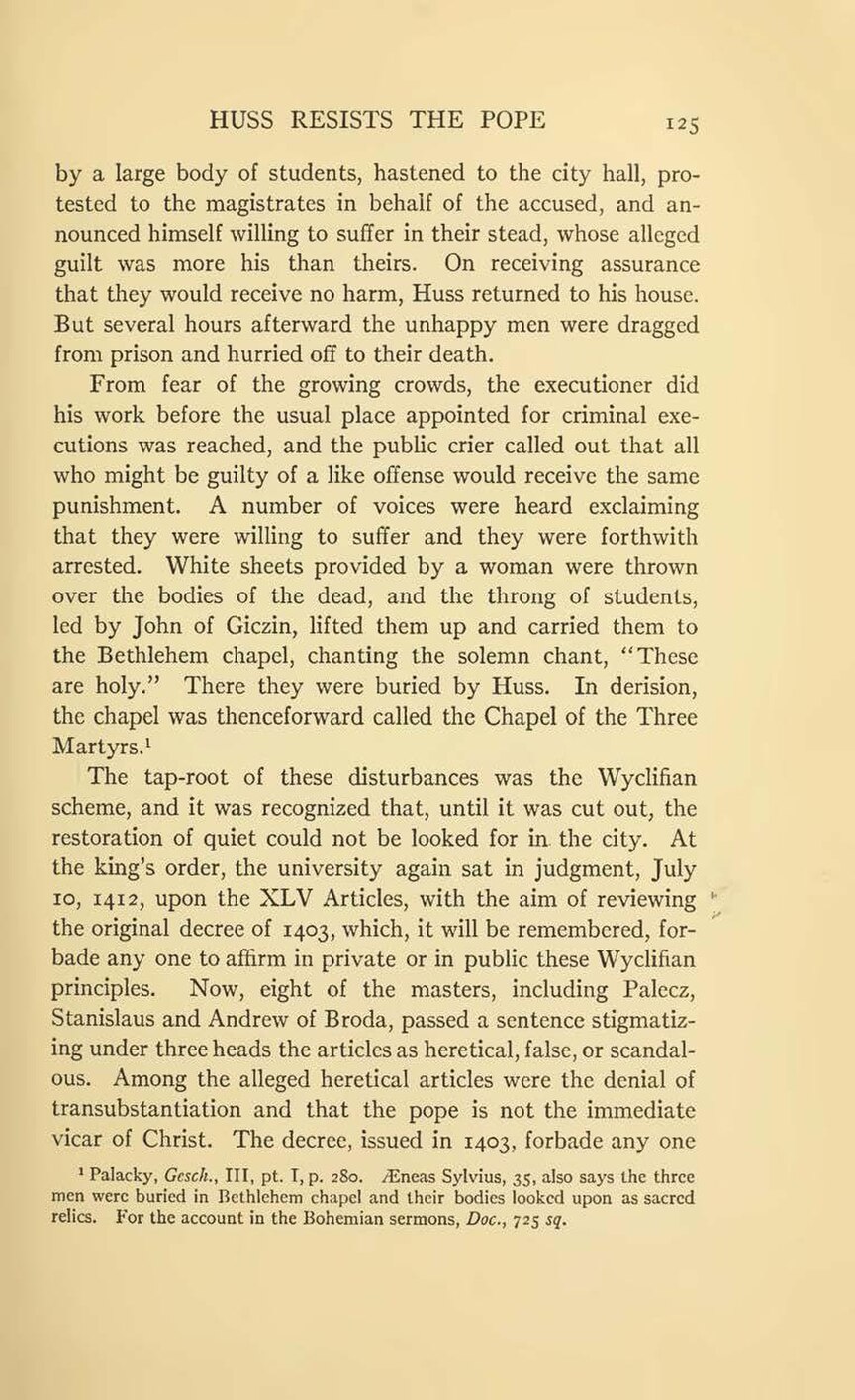by a large body of students, hastened to the city hall, protested to the magistrates in behalf of the accused, and announced himself willing to suffer in their stead, whose alleged guilt was more his than theirs. On receiving assurance that they would receive no harm, Huss returned to his house. But several hours afterward the unhappy men were dragged from prison and hurried off to their death.
From fear of the growing crowds, the executioner did his work before the usual place appointed for criminal executions was reached, and the public crier called out that all who might be guilty of a like offense would receive the same punishment. A number of voices were heard exclaiming that they were willing to suffer and they were forthwith arrested. White sheets provided by a woman were thrown over the bodies of the dead, and the throng of students, led by John of Giczin, lifted them up and carried them to the Bethlehem chapel, chanting the solemn chant, “These are holy.” There they were buried by Huss. In derision, the chapel was thenceforward called the Chapel of the Three Martyrs.[1]
The tap-root of these disturbances was the Wyclifian scheme, and it was recognized that, until it was cut out, the restoration of quiet could not be looked for in the city. At the king’s order, the university again sat in judgment, July 10, 1412, upon the XLV Articles, with the aim of reviewing the original decree of 1403, which, it will be remembered, forbade any one to affirm in private or in public these Wyclifian principles. Now, eight of the masters, including Palecz, Stanislaus and Andrew of Broda, passed a sentence stigmatizing under three heads the articles as heretical, false, or scandalous. Among the alleged heretical articles were the denial of transubstantiation and that the pope is not the immediate vicar of Christ. The decree, issued in 1403, forbade any one
- ↑ Palacky, Gesch., III, pt. I, p. 280. Æneas Sylvius, 35, also says the three men were buried in Bethlehem chapel and their bodies looked upon as sacred relics. For the account in the Bohemian sermons, Doc., 725 sq.
